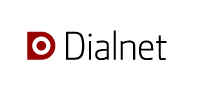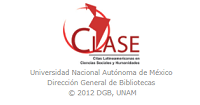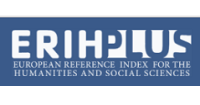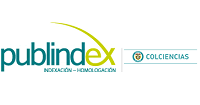FORMAT FOR THE EVALUATION OF QUANTITATIVE ARTICLES
Dear reviewer:
We would appreciate your evaluation of this manuscript within a maxi-mum period of four weeks. If for any reason you are unable to meet this deadline, please suggest another reviewer.
Please provide comments on the issues that you identify with the article next to the guiding questions, in the boxes to the right of these ques-tions. You can also use this box to explain your evaluation of each point. If you feel it is necessary, you can include an additional report at the end of this form. These comments are essential to help the author(s) improve their article and for the editors to make a final decision on pub-lishing the paper.
Thank you again for your time and help.
-The Editors
A. General
Interest of the article: Is the article or document accessible and interesting for a Latin American and, in general, international audience?
Location in the academic field. Please provide your assessment of the following statements, with 1 representing “strongly disagree” and 5 representing “strongly agree”:
|
|
1 |
2 |
3 |
4 |
5 |
|
The article is clearly placed in a specific problem area related to children or youth that is of interest and is current. |
|
|
|
|
|
|
This specific problem area is of interest and topical. |
|
|
|
|
|
|
The article significantly contributes to enriching that field. |
|
|
|
|
|
|
The article reflects suitable knowledge of and use of previous research from this academic field in general and, in particular, related to the specific topic covered by the article. |
|
|
|
|
|
Any additional comments for the author(s) or the editors?
B. Constituting elements
Title, abstract and keywords. Please provide your assessment of the following statements, with 1 representing “strongly disagree” and 5 representing “strongly agree”:
|
|
1 |
2 |
3 |
4 |
5 |
|
The title summarizes the thematic core of the article. |
|
|
|
|
|
|
">The title helps attract readers to the article. |
|
|
|
|
|
|
The abstract is understandable without having to read the whole article. |
|
|
|
|
|
|
The abstract is precise, coherent and concise. |
|
|
|
|
|
|
The abstract presents all - and exclusively - the key elements of the article (problem, question/hypothesis or objective, method, results and conclusions). |
|
|
|
|
|
|
The keywords are appropriate. |
|
|
|
|
|
|
The abstract does not require any other keywords. |
|
|
|
|
|
Please add any additional comments to the above point for the author(s) or edi-tors:
Introduction. Please provide your assessment of the following statements, with 1 representing “strongly disagree” and 5 representing “strongly agree”:
|
|
1 |
2 |
3 |
4 |
5 |
|
This section is appropriate for the type of article. |
|
|
|
|
|
|
The introduction is interesting and draws the reader in so that they will read the rest of the article. |
|
|
|
|
|
|
It includes a presentation and contextualization of the problem that is concise and clearly presented. |
|
|
|
|
|
|
It justifies the research that has been carried out. |
|
|
|
|
|
|
The introduction presents its conceptual references and relevant literature in a concise way, including both historical and current (last three years) references. |
|
|
|
|
|
|
It clearly and explicitly states its objective and the question or hypothesis used in the research. |
|
|
|
|
|
Please add any additional comments to the above point for the author(s) or edi-tors:
Method: Does the description of the method used present the following elements in a clear and detailed manner?
|
|
Yes |
No |
|
Epistemological foundation. |
|
|
|
Design. |
|
|
|
Description of participants. |
|
|
|
Sample selection process. |
|
|
|
Techniques and instruments for collecting the information (as well as testing and validation). |
|
|
|
Processes for addressing relevant ethical issues. |
|
|
|
Data analysis techniques or processes. |
|
|
Please add any additional comments to the above point for the author(s) or editors:
Results: Please provide your assessment of the following statements, with 1 representing “strongly disagree” and 5 representing “strongly agree”:
|
|
1 |
2 |
3 |
4 |
5 |
|
The presentation of the results of the research corresponds to what can be expected from the instruments described in the section on the methodology used without omissions or additions of other instruments. |
|
|
|
|
|
|
The results are presented in an organized, clear and relevant way in accordance with the problem, the question/hypothesis and the objectives of the research |
|
|
|
|
|
Please add any additional comments to the above point for the author(s) or editors:
Discussion. Please provide your assessment of the following statements, with 1 representing “strongly disagree” and 5 representing “strongly agree”:
|
|
1 |
2 |
3 |
4 |
5 |
|
The discussion follows rigorously on from the results, without adding new elements that are not clearly supported by the results. |
|
|
|
|
|
|
The discussion is focused on answering the research question and its objectives. |
|
|
|
|
|
|
This section includes a presentation and contextualization of the problem that is concise and clearly presented. |
|
|
|
|
|
|
There are similarities and differences to the results from research by other authors. |
|
|
|
|
|
|
The authors' argumentation in this section is original and suggestive. |
|
|
|
|
|
|
The limitations of the study are explicit and clear. |
|
|
|
|
|
|
The importance and implications of the results (if any) have been described. |
|
|
|
|
|
Please add any additional comments to the above point for the author(s) or editors:
Bibliographic references. Please provide your assessment of the following statements, with 1 representing “strongly disagree” and 5 representing “strongly agree”:
|
|
1 |
2 |
3 |
4 |
5 |
|
The references are relevant and sufficient. |
|
|
|
|
|
|
Most of them are current (from the last 3 years and the current year). |
|
|
|
|
|
|
They're all necessary. |
|
|
|
|
|
|
The references also include authors who are considered classics in the field. |
|
|
|
|
|
Please add any additional comments to the above point for the author(s) or editors:
C. Argumentation
Argumentative or expository coherence. Please provide your assessment of the following statements, with 1 representing “strongly disagree” and 5 representing “strongly agree”:
|
|
1 |
2 |
3 |
4 |
5 |
|
The various arguments presented support the theses they defend. |
|
|
|
|
|
|
The arguments are logically and progressively organized and are suitably connected. |
|
|
|
|
|
|
The references used support the arguments of the author(s). |
|
|
|
|
|
|
The argument is organized hierarchically. |
|
|
|
|
|
Please add any additional comments to the above point for the author(s) or editors:
Precision and conceptual clarity. Please provide your assessment of the following statements, with 1 representing “strongly disagree” and 5 representing “strongly agree”:
|
|
1 |
2 |
3 |
4 |
5 |
|
The article is precise, concrete and uses economy of language. |
|
|
|
|
|
|
The concepts used are relevant for the arguments. |
|
|
|
|
|
|
When the concepts are defined, these definitions are precise. |
|
|
|
|
|
Please add any additional comments to the above point for the author(s) or edi-tors:
Textual cohesion. Please provide your assessment of the following statements, with 1 representing “strongly disagree” and 5 representing “strongly agree”:
|
|
1 |
2 |
3 |
4 |
5 |
|
The text is grammatically accurate and its syntax is cohesive. |
|
|
|
|
|
|
It's written in clear language. |
|
|
|
|
|
|
It needs further style correction / proofreading. |
|
|
|
|
|
Please add any additional comments to the above point for the author(s) or edi-tors:
Recommendations. We would be grateful if you could provide us with your general suggestions. If you wish, you can make other specific annotations directly in the arti-cle file using the Comments tool in the MS Word software.
Final concept. Please mark your decision with an x in only one of the following op-tions:
|
|
The article is publishable as is (or with minor editorial corrections). |
|
|
The article can be published with minor modifications without the need for a new evaluation. |
|
|
The article is publishable but requires substantial modifications and a new evaluation. |
|
|
The article is not publishable in the Journal. |















